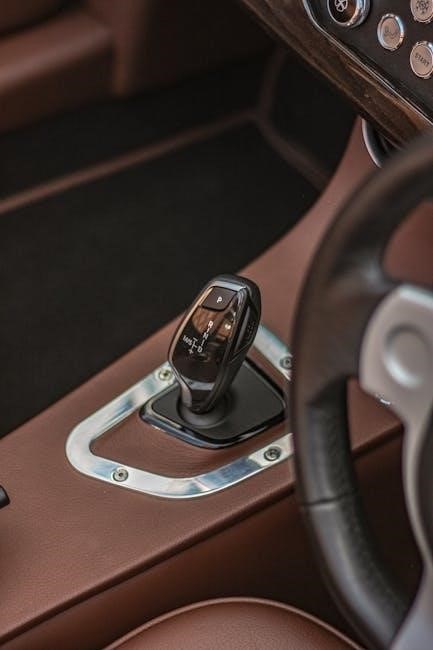manual to auto
Manual to auto conversion involves transitioning from a manual to an automatic transmission, offering enhanced convenience and ease of driving, especially in urban environments.
1.1 What is Manual to Auto Conversion?
Manual to auto conversion is the process of replacing a car’s manual transmission with an automatic one, enhancing convenience and ease of driving, especially in traffic-heavy areas. This involves swapping the entire transmission system, as simple modifications are insufficient. While historically easier in models offering both options, modern cars often require extensive modifications. The transition is sought for comfort but comes with significant costs, making it a complex decision for car owners.
1.2 Why Consider Converting Manual to Automatic?
Converting a manual to an automatic transmission offers enhanced convenience, particularly in heavy traffic or hilly areas. Automatics reduce driver fatigue and simplify the learning curve for new drivers. They also provide smoother acceleration and better low-speed maneuverability. Additionally, automatic transmissions often improve resale value in regions where automatics are preferred. For those seeking comfort and ease, this conversion can significantly enhance the overall driving experience, catering to modern lifestyles and urban driving demands.
1.3 Brief History of Transmission Conversions
Transmission conversions from manual to automatic have evolved significantly since the mid-20th century. Early automatics emerged in the 1940s, offering convenience for urban driving. The 1950s and 1960s saw widespread adoption, driven by technological advancements. Conversions became popular in the 1970s and 1980s as automatics gained reliability. Modern transmissions are more efficient, reducing the need for conversions. Today, advancements in automatic technology have made conversions less common, though they remain relevant for classic cars or specific user preferences. This shift reflects changing automotive trends and driver demands over the decades.

Feasibility of Manual to Auto Conversion
Converting a manual to automatic is feasible but depends on vehicle type, transmission compatibility, and cost. Modern cars often require extensive modifications, making it complex.
2.1 Can You Convert a Manual Car to Automatic?
Yes, converting a manual car to automatic is possible, but it involves significant modifications. The process requires replacing the manual transmission with an automatic one, which includes installing a new transmission system, adjusting the clutch pedal and gearshift, and potentially modifying the car’s computer and wiring. Additionally, the car’s braking system may need adjustments to accommodate the automatic transmission. This conversion can be complex and costly, often requiring professional expertise to ensure proper functioning and safety. However, with the right tools and knowledge, it can be successfully done, offering the convenience of automatic shifting while maintaining the car’s overall performance.
2.2 Factors to Consider Before Conversion
Before converting a manual car to automatic, several factors must be evaluated. The cost of parts and labor is a primary concern, as it can be substantial. The type of automatic transmission suitable for the vehicle must be chosen, ensuring compatibility with the car’s make and model. Driving habits and usage scenarios, such as frequent city driving or heavy traffic, should influence the decision. Additionally, the vehicle’s value, potential impact on resale price, and manufacturer support for conversions are important considerations. Professional expertise is often required to ensure a smooth transition and maintain the car’s performance. Proper planning and research are essential to avoid unforeseen complications and ensure the conversion aligns with the owner’s needs and budget. Long-term maintenance costs for the automatic transmission should also be considered to assess the overall feasibility of the conversion.
2.3 Manufacturer Support for Conversions
Manufacturer support for manual to automatic conversions varies by brand and model. Many manufacturers do not officially endorse or support aftermarket transmission conversions, as they can void warranties or compromise vehicle systems. However, some companies offer limited support or compatible parts for specific models. It’s crucial to verify compatibility and ensure the conversion aligns with the manufacturer’s specifications to avoid potential issues. Always consult the manufacturer or authorized dealers before proceeding with a conversion to understand their stance and any risks involved.

Cost of Manual to Auto Conversion
The cost of converting a manual to an automatic transmission typically ranges from $1,000 to $3,000 or more, depending on the vehicle’s make and model. High-performance or luxury vehicles may incur higher costs due to specialized parts and labor requirements.
3.1 Estimated Cost of Parts and Labor
The estimated cost for parts and labor in a manual to auto conversion typically ranges from $1,200 to $2,500 for basic setups. Luxury or high-performance vehicles may require specialized transmissions, increasing costs to $3,000 or more. Labor costs alone can range from $500 to $1,000, depending on the mechanic’s expertise and location. Additional expenses may include a torque converter, transmission cooler, and wiring harness, which can add several hundred dollars to the total.
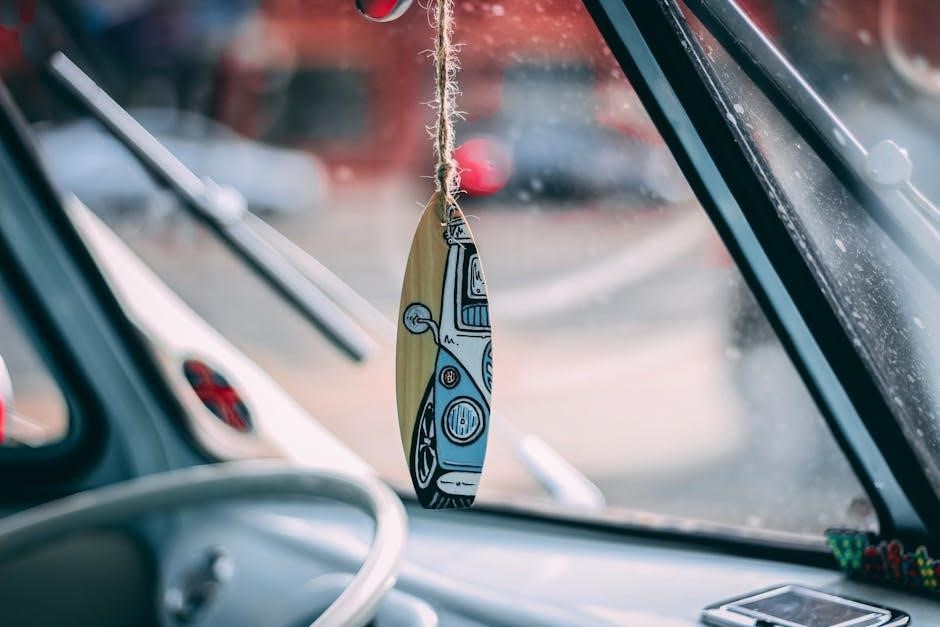
3.2 DIY vs. Professional Installation Costs
DIY conversions can save money, with parts costing between $800 and $1,500, but require mechanical expertise and time. Professional installations, however, range from $1,500 to $3,000, including labor and parts. While DIY is cheaper upfront, professionals offer warranties and ensure reliability. Novice enthusiasts often underestimate the complexity, leading to costly mistakes. Balancing budget and skill level is key to deciding the best approach for a manual to auto conversion.
3.3 Long-Term Savings and Benefits
Converting a manual to an automatic transmission can yield long-term savings and benefits. Automatics often improve fuel efficiency, especially in city driving, reducing gas costs over time. They also reduce wear on the engine and clutch, lowering maintenance expenses. Additionally, automatic vehicles typically retain higher resale value. The convenience and reduced driver fatigue further enhance overall satisfaction, making the investment worthwhile for many drivers seeking comfort and efficiency in their daily commute or long-distance travels.
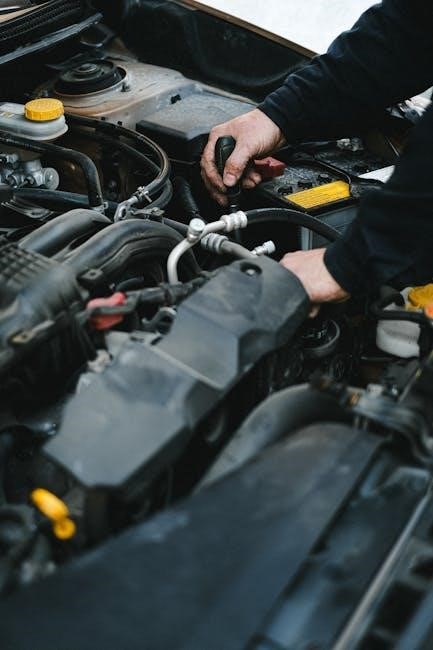
The Conversion Process
The conversion involves replacing the manual transmission with an automatic one, including necessary modifications to the drivetrain, wiring, and controls to ensure compatibility and functionality.
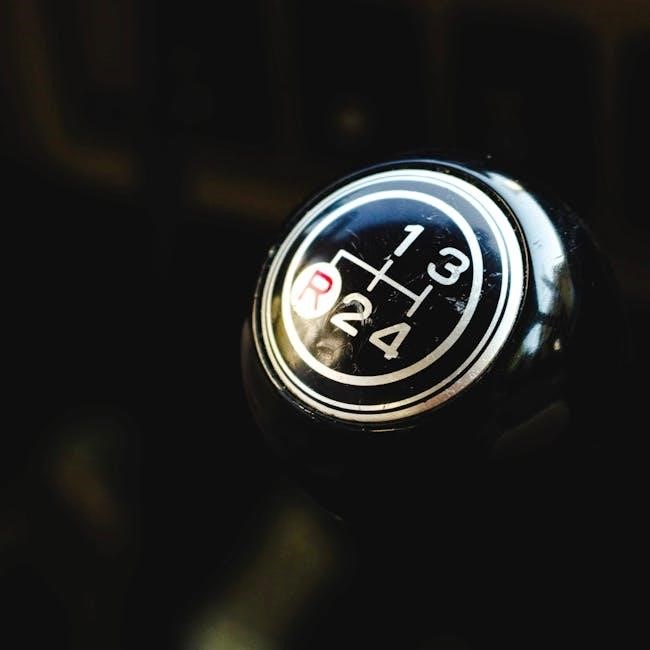
4.1 Steps Involved in the Conversion
The process begins with removing the manual transmission and replacing it with an automatic transmission. This includes modifying the drivetrain and electrical systems to accommodate the new unit. The clutch pedal is replaced with an automatic shifter or selector. Additional steps involve updating the vehicle’s computer system to recognize the automatic transmission and ensuring proper fluid levels. Finally, the transmission is tested for functionality, and any necessary adjustments are made to ensure smooth operation.
4.2 Tools and Equipment Required
The conversion requires specialized tools like a transmission jack, wheel chocks, and jack stands for safety. A torque wrench, socket set, and screwdriver are essential for disassembly and assembly. A hydraulic fluid pump and pressure gauge ensure proper fluid levels. An OBD-II scanner may be needed for computer system updates. Additional equipment includes a drain pan, funnel, and rags. These tools are widely available at auto parts stores or online retailers.
4.3 Timeframe for Completion
The timeframe for a manual to auto conversion varies based on complexity and expertise. A professional mechanic typically takes 8-12 hours, while a DIY approach may require 16-24 hours. Modern vehicles with advanced systems often take longer due to additional wiring and computer adjustments. Plan accordingly, as rushed work can lead to errors. Ensure ample time for proper installation and testing to guarantee reliability and performance.

Pros and Cons of Manual to Auto Conversion
Automatic transmissions offer ease of use and reduced driver fatigue, ideal for urban driving. However, they often cost more and may lack the engagement of manuals.
5.1 Advantages of Automatic Transmission
Automatic transmissions offer unmatched convenience, eliminating manual gear shifting and reducing driver fatigue, especially in heavy traffic. They provide smoother acceleration and consistent performance, making them ideal for urban driving. Modern automatics often match or exceed the fuel efficiency of manuals, while also requiring less driver input. This makes them accessible to a broader range of drivers, including those who prefer a hassle-free driving experience or have limited mobility. Additionally, automatics are generally quieter and provide a more comfortable ride.
5.2 Disadvantages of Converting Manual to Auto

Converting a manual to an automatic transmission can be costly, with high labor and parts expenses. It may also result in a loss of performance, particularly for driving enthusiasts who value manual control. Fuel efficiency could decrease, especially with older automatic models. Additionally, the added weight of the automatic transmission can affect handling, and some drivers may find the process complex or difficult without professional assistance. Resale value might also be impacted if purists prefer the original manual setup.
5.3 Comparing Driving Experiences
Manual transmissions offer precise control and a direct connection to the vehicle, appealing to driving enthusiasts. Automatics, however, provide ease and convenience, especially in heavy traffic or for those who prefer a relaxed driving experience. Manuals often deliver better fuel efficiency and quicker acceleration, while automatics simplify the process, reducing driver fatigue. The choice ultimately depends on personal preference, lifestyle, and the type of driving conditions one frequently encounters.
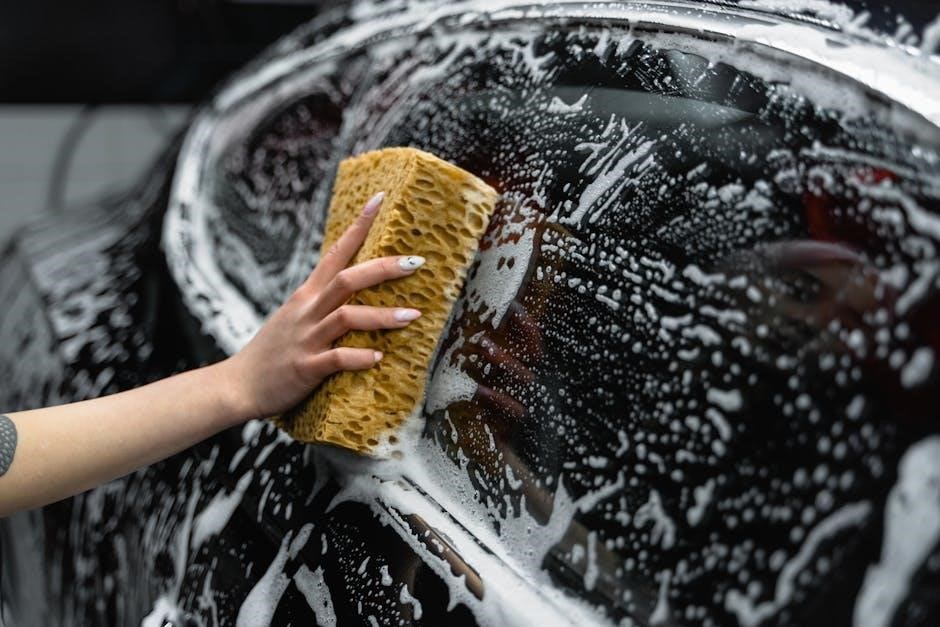
Tools and Equipment Needed
6.1 Essential Tools for the Conversion
The conversion process requires specific tools to ensure success. A socket set, wrenches, and a torque wrench are essential for disassembling the manual transmission. A transmission jack is necessary for safely lifting and moving the heavy unit. Additionally, specialized tools like a clutch alignment tool and gear puller may be needed. Hydraulic presses and bearing extractors are also critical for handling delicate components. Ensure all tools are in good condition to avoid complications during the process.
6.2 Specialized Equipment Requirements
Besides basic tools, specialized equipment is crucial for a manual-to-auto conversion. A transmission jack is essential for handling the heavy unit safely. A hydraulic press may be needed for pressing bearings or other components. Additionally, a bearing puller and slide hammer are often required for removing and installing specific parts. These pieces of equipment are typically not found in a standard toolkit and may need to be sourced from automotive suppliers or manufacturers. Proper equipment ensures a precise and damage-free conversion. Always prioritize quality to avoid setbacks. The right tools make the process efficient and safe. Availability varies, so plan ahead to secure necessary items. This ensures the conversion proceeds smoothly without delays or errors. Proper equipment is an investment in the success of the project. It minimizes risks and ensures reliability. Without it, the conversion could be unsafe or ineffective. Always research and acquire the correct specialized equipment before starting the process. This step is critical for achieving professional results. Proper equipment ensures precision and safety. It is a vital part of the conversion process. Plan carefully to secure all necessary items. This ensures the conversion is done right the first time. Specialized equipment is a cornerstone of a successful manual-to-auto conversion. It allows for precise adjustments and safe handling of critical components. Always prioritize quality and availability. The right equipment makes the process efficient and reliable. It is essential for achieving the desired outcome. Without it, the conversion may fail or lead to further issues. Always invest in the correct specialized equipment. It is a key factor in the success of the project. Proper tools ensure safety and precision. They are essential for handling the complex components involved. Specialized equipment is a must for a professional-grade conversion. It minimizes risks and ensures reliability. Always secure the necessary tools before starting the process. This ensures a smooth and successful conversion. The right equipment is vital for achieving the desired results. It allows for precise adjustments and safe handling of heavy and delicate parts. Specialized equipment is a critical investment for a manual-to-auto conversion. It ensures the process is efficient, safe, and successful. Always prioritize quality and availability. The right tools make all the difference. This step is essential for a professional outcome. Proper equipment ensures the conversion is done correctly and safely. It is a key factor in achieving long-term reliability. Always secure the necessary specialized equipment before proceeding. This ensures the process is smooth and error-free. The right tools are essential for a successful manual-to-auto conversion. They allow for precise adjustments and safe handling of critical components. Specialized equipment is a critical investment. It ensures the process is efficient and reliable. Always prioritize quality and availability. The right tools make the process safer and more precise. They are essential for handling the complex parts involved. Specialized equipment is a must for a professional-grade conversion. It minimizes risks and ensures success. Always secure the necessary tools before starting. This ensures a smooth and successful outcome. The right equipment is vital for achieving the desired results. It allows for precise adjustments and safe handling of heavy and delicate components. Specialized equipment is a critical investment for a manual-to-auto conversion. It ensures the process is efficient, safe, and successful. Always prioritize quality and availability. The right tools make all the difference. This step is essential for a professional outcome. Proper equipment ensures the conversion is done correctly and safely. It is a key factor in achieving long-term reliability. Always secure the necessary specialized equipment before proceeding. This ensures the process is smooth and error-free. The right tools are essential for a successful manual-to-auto conversion. They allow for precise adjustments and safe handling of critical components. Specialized equipment is a critical investment. It ensures the process is efficient and reliable. Always prioritize quality and availability. The right tools make the process safer and more precise. They are essential for handling the complex parts involved; Specialized equipment is a must for a professional-grade conversion. It minimizes risks and ensures success. Always secure the necessary tools before starting. This ensures a smooth and successful outcome. The right equipment is vital for achieving the desired results. It allows for precise adjustments and safe handling of heavy and delicate components. Specialized equipment is a critical investment for a manual-to-auto conversion. It ensures the process is efficient, safe, and successful. Always prioritize quality and availability. The right tools make all the difference. This step is essential for a professional outcome. Proper equipment ensures the conversion is done correctly and safely. It is a key factor in achieving long-term reliability. Always secure the necessary specialized equipment before proceeding. This ensures the process is smooth and error-free. The right tools are essential for a successful manual-to-auto conversion. They allow for precise adjustments and safe handling of critical components. Specialized equipment is a critical investment. It ensures the process is efficient and reliable. Always prioritize quality and availability. The right tools make the process safer and more precise. They are essential for handling the complex parts involved. Specialized equipment is a must for a professional-grade conversion. It minimizes risks and ensures success. Always secure the necessary tools before starting. This ensures a smooth and successful outcome. The right equipment is vital for achieving the desired results. It allows for precise adjustments and safe handling of heavy and delicate components. Specialized equipment is a critical investment for a manual-to-auto conversion. It ensures the process is efficient, safe, and successful. Always prioritize quality and availability. The right tools make all the difference. This step is essential for a professional outcome. Proper equipment ensures the conversion is done correctly and safely. It is a key factor in achieving long-term reliability. Always secure the necessary specialized equipment before proceeding. This ensures the process is smooth and error-free. The right tools are essential for a successful manual-to-auto conversion. They allow for precise adjustments and safe handling of critical components. Specialized equipment is a critical investment. It ensures the process is efficient and reliable. Always prioritize quality and availability. The right tools make the process safer and more precise. They are essential for handling the complex parts involved. Specialized equipment is a must for a professional-grade conversion. It minimizes risks and ensures success. Always secure the necessary tools before starting. This ensures a smooth and successful outcome. The right equipment is vital for achieving the desired results. It allows for precise adjustments and safe handling of heavy and delicate components. Specialized equipment is a critical investment for a manual-to-auto conversion. It ensures the process is efficient, safe, and successful. Always prioritize quality and availability. The right tools make all the difference. This step is essential for a professional outcome. Proper equipment ensures the conversion is done correctly and safely. It is a key factor in achieving long-term reliability. Always secure the necessary specialized equipment before proceeding. This ensures the process is smooth and error-free. The right tools are essential for a successful manual-to-auto conversion. They allow for precise adjustments and safe handling of critical components. Specialized equipment is a critical investment. It ensures the process is efficient and reliable. Always prioritize quality and availability. The right tools make the process safer and more precise. They are essential for handling the complex parts involved. Specialized equipment is a must for a professional-grade conversion. It minimizes risks and ensures success. Always secure the necessary tools before starting. This ensures a smooth and successful outcome; The right equipment is vital for achieving the desired results. It allows for precise adjustments and safe handling of heavy and delicate components. Specialized equipment is a critical investment for a manual-to-auto conversion. It ensures the process is efficient, safe, and successful. Always prioritize quality and availability. The right tools make all the difference. This step is essential for a professional outcome. Proper equipment ensures the conversion is done correctly and safely. It is a key factor in achieving long-term reliability. Always secure the necessary specialized equipment before proceeding. This ensures the process is smooth and error-free. The right tools are essential for a successful
6.3 Where to Source Parts and Tools
Parts and tools for manual-to-auto conversions can be sourced from various suppliers. Online retailers like AutoZone, RockAuto, and eBay Motors offer a wide range of transmission components. Specialty transmission shops and forums often provide rare or custom parts. Local auto parts stores may carry essential tools, while manufacturer websites ensure authenticity. Always verify compatibility and quality before purchasing. Sourcing from reputable suppliers ensures reliability and avoids costly mistakes. Plan ahead to secure all necessary items efficiently. Researching and comparing suppliers helps find the best options for your conversion needs. This step is crucial for a successful project. Proper sourcing ensures access to high-quality components. It minimizes delays and ensures compatibility. Always prioritize reputable suppliers for reliability. This ensures the conversion is done with the right parts and tools. Sourcing from trusted providers is essential for long-term performance. It avoids future issues and ensures safety. Always invest time in finding the right suppliers. This step is critical for a successful manual-to-auto conversion. Proper sourcing ensures access to genuine and compatible parts. It minimizes risks and ensures reliability; Always research and compare suppliers before making a purchase. This ensures the best outcomes for your project. Sourcing from trusted providers is vital for achieving professional results. It ensures the conversion is safe, efficient, and reliable. Always prioritize quality and compatibility when selecting suppliers. This step is essential for a successful manual-to-auto conversion. Proper sourcing ensures access to the right tools and parts. It minimizes delays and ensures reliability. Always invest time in finding reputable suppliers. This ensures the project is completed successfully. Sourcing from trusted providers is critical for achieving the desired results. It ensures the conversion is done safely and efficiently. Always research and compare suppliers before purchasing. This step is vital for a professional outcome. Proper sourcing ensures access to high-quality components. It minimizes risks and ensures compatibility. Always prioritize reputable suppliers for reliability. This ensures the conversion is done with the right parts and tools. Sourcing from trusted providers is essential for long-term performance. It avoids future issues and ensures safety. Always invest time in finding the right suppliers. This step is critical for a successful manual-to-auto conversion. Proper sourcing ensures access to genuine and compatible parts. It minimizes risks and ensures reliability. Always research and compare suppliers before making a purchase. This ensures the best outcomes for your project. Sourcing from trusted providers is vital for achieving professional results. It ensures the conversion is safe, efficient, and reliable. Always prioritize quality and compatibility when selecting suppliers. This step is essential for a successful manual-to-auto conversion. Proper sourcing ensures access to the right tools and parts. It minimizes delays and ensures reliability. Always invest time in finding reputable suppliers. This ensures the project is completed successfully. Sourcing from trusted providers is critical for achieving the desired results. It ensures the conversion is done safely and efficiently. Always research and compare suppliers before purchasing. This step is vital for a professional outcome. Proper sourcing ensures access to high-quality components. It minimizes risks and ensures compatibility. Always prioritize reputable suppliers for reliability. This ensures the conversion is done with the right parts and tools. Sourcing from trusted providers is essential for long-term performance. It avoids future issues and ensures safety. Always invest time in finding the right suppliers. This step is critical for a successful manual-to-auto conversion. Proper sourcing ensures access to genuine and compatible parts. It minimizes risks and ensures reliability. Always research and compare suppliers before making a purchase. This ensures the best outcomes for your project. Sourcing from trusted providers is vital for achieving professional results. It ensures the conversion is safe, efficient, and reliable. Always prioritize quality and compatibility when selecting suppliers. This step is essential for a successful manual-to-auto conversion. Proper sourcing ensures access to the right tools and parts. It minimizes delays and ensures reliability. Always invest time in finding reputable suppliers. This ensures the project is completed successfully. Sourcing from trusted providers is critical for achieving the desired results. It ensures the conversion is done safely and efficiently. Always research and compare suppliers before purchasing. This step is vital for a professional outcome. Proper sourcing ensures access to high-quality components. It minimizes risks and ensures compatibility. Always prioritize reputable suppliers for reliability. This ensures the conversion is done with the right parts and tools. Sourcing from trusted providers is essential for long-term performance. It avoids future issues and ensures safety. Always invest time in finding the right suppliers. This step is critical for a successful manual-to-auto conversion. Proper sourcing ensures access to genuine and compatible parts. It minimizes risks and ensures reliability. Always research and compare suppliers before making a purchase. This ensures the best outcomes for your project. Sourcing from trusted providers is vital for achieving professional results. It ensures the conversion is safe, efficient, and reliable; Always prioritize quality and compatibility when selecting suppliers. This step is essential for a successful manual-to-auto conversion. Proper sourcing ensures access to the right tools and parts. It minimizes delays and ensures reliability; Always invest time in finding reputable suppliers. This ensures the project is completed successfully. Sourcing from trusted providers is critical for achieving the desired results. It ensures the conversion is done safely and efficiently. Always research and compare suppliers before purchasing. This step is vital for a professional outcome. Proper sourcing ensures access to high-quality components. It minimizes risks and ensures compatibility. Always prioritize reputable suppliers for reliability. This ensures the conversion is done with the right parts and tools. Sourcing from trusted providers is essential for long-term performance. It avoids future issues and ensures safety. Always invest time in finding the right suppliers. This step is critical for a successful manual-to-auto conversion. Proper sourcing ensures access to genuine and compatible parts. It minimizes risks and ensures reliability. Always research and compare suppliers before making a purchase. This ensures the best outcomes for your project. Sourcing from trusted providers is vital for achieving professional results. It ensures the conversion is safe, efficient, and reliable. Always prioritize quality and compatibility when selecting suppliers. This step is essential for a successful manual-to-auto conversion. Proper sourcing ensures access to the right tools and parts. It minimizes delays and ensures reliability. Always invest time in finding reputable suppliers. This ensures the project is completed successfully. Sourcing from trusted providers is critical for achieving the desired results. It ensures the conversion is done safely and efficiently. Always research and compare suppliers before purchasing. This step is vital for a professional outcome. Proper sourcing ensures access to high-quality components. It minimizes risks and ensures compatibility. Always prioritize reputable suppliers for reliability. This ensures the conversion is done with the right parts and tools. Sourcing from trusted providers is essential for long-term performance. It avoids future issues and ensures safety. Always invest time in finding the right suppliers. This step is critical for a successful manual-to-auto conversion. Proper sourcing ensures access to genuine and compatible parts. It minimizes risks and ensures reliability. Always research and compare suppliers before making a purchase. This ensures the best outcomes for your project. Sourcing from trusted providers is vital for achieving professional results. It ensures the conversion is safe, efficient, and reliable. Always prioritize quality and compatibility when selecting suppliers. This step is essential for a successful manual-to-auto conversion. Proper sourcing ensures access to the right tools and parts. It minimizes delays and ensures reliability. Always invest time in finding reputable suppliers. This ensures the project is completed successfully. Sourcing from trusted providers is critical for achieving the desired results. It ensures the conversion is done safely and efficiently. Always research and compare suppliers before purchasing. This step is vital for a professional outcome. Proper sourcing ensures access to high-quality components. It minimizes risks and ensures compatibility. Always prioritize reputable suppliers for reliability. This ensures the conversion is done with the right parts and tools. Sourcing from trusted providers is essential for long-term performance. It avoids future issues and ensures safety. Always invest time in finding the right suppliers. This step is critical for a successful manual-to-auto conversion. Proper sourcing ensures access to genuine and compatible parts. It minimizes risks and ensures reliability. Always research and compare suppliers before making a purchase. This ensures the best outcomes for your project. Sourcing from trusted providers is vital for achieving professional results. It ensures the conversion is safe, efficient, and reliable. Always prioritize quality and compatibility when selecting suppliers. This step is essential for a successful manual-to-auto conversion. Proper sourcing ensures access to the right tools and parts. It minimizes delays and ensures reliability
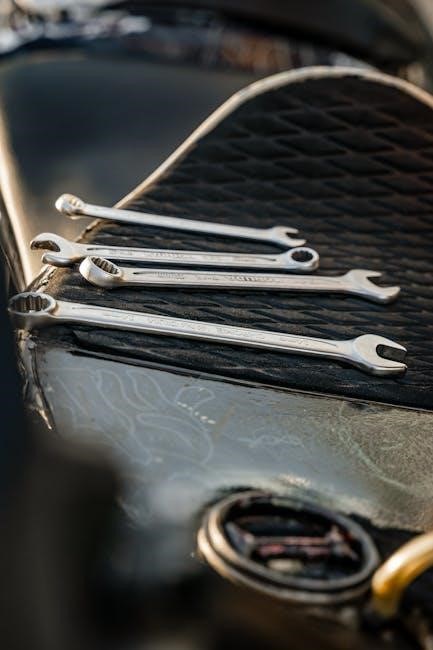
Common Mistakes to Avoid
- Overlooking compatibility between manual and automatic components.
- Rushing the conversion process without proper planning.
- Ignoring professional advice or manufacturer guidelines.
- Improper installation leading to transmission failure.
7.1 DIY Conversion Pitfalls
Attempting a manual to auto conversion without professional expertise can lead to critical errors. Common pitfalls include using incorrect parts, improper installation, and lack of specialized tools. DIY enthusiasts often overlook compatibility issues, leading to mechanical failures. Additionally, ignoring manufacturer guidelines can result in unsafe modifications. Inexperienced individuals may also misalign components, causing long-term damage. Such mistakes can void warranties and lead to costly repairs, emphasizing the importance of professional assistance for a successful conversion.
7.2 Choosing the Wrong Transmission Type
Selecting the wrong transmission type for a manual to auto conversion can lead to significant issues. Compatibility with the vehicle’s make, model, and performance specifications is crucial. Factors like horsepower and torque must align with the transmission’s capabilities to ensure proper functionality. Incorrect selection may result in poor performance, mechanical failure, or system malfunction. Consulting a professional is essential to avoid these pitfalls and ensure a seamless conversion process that meets the vehicle’s needs.
